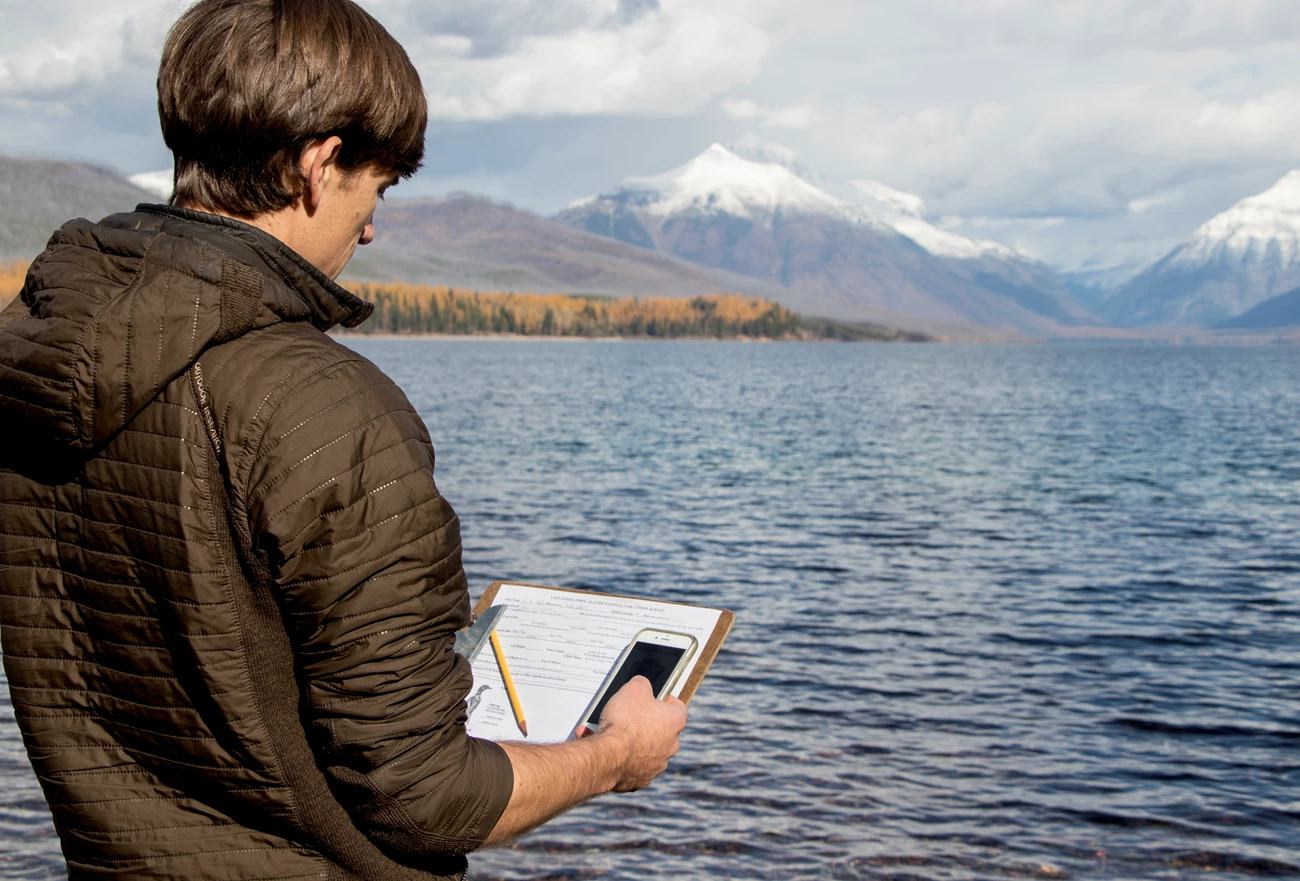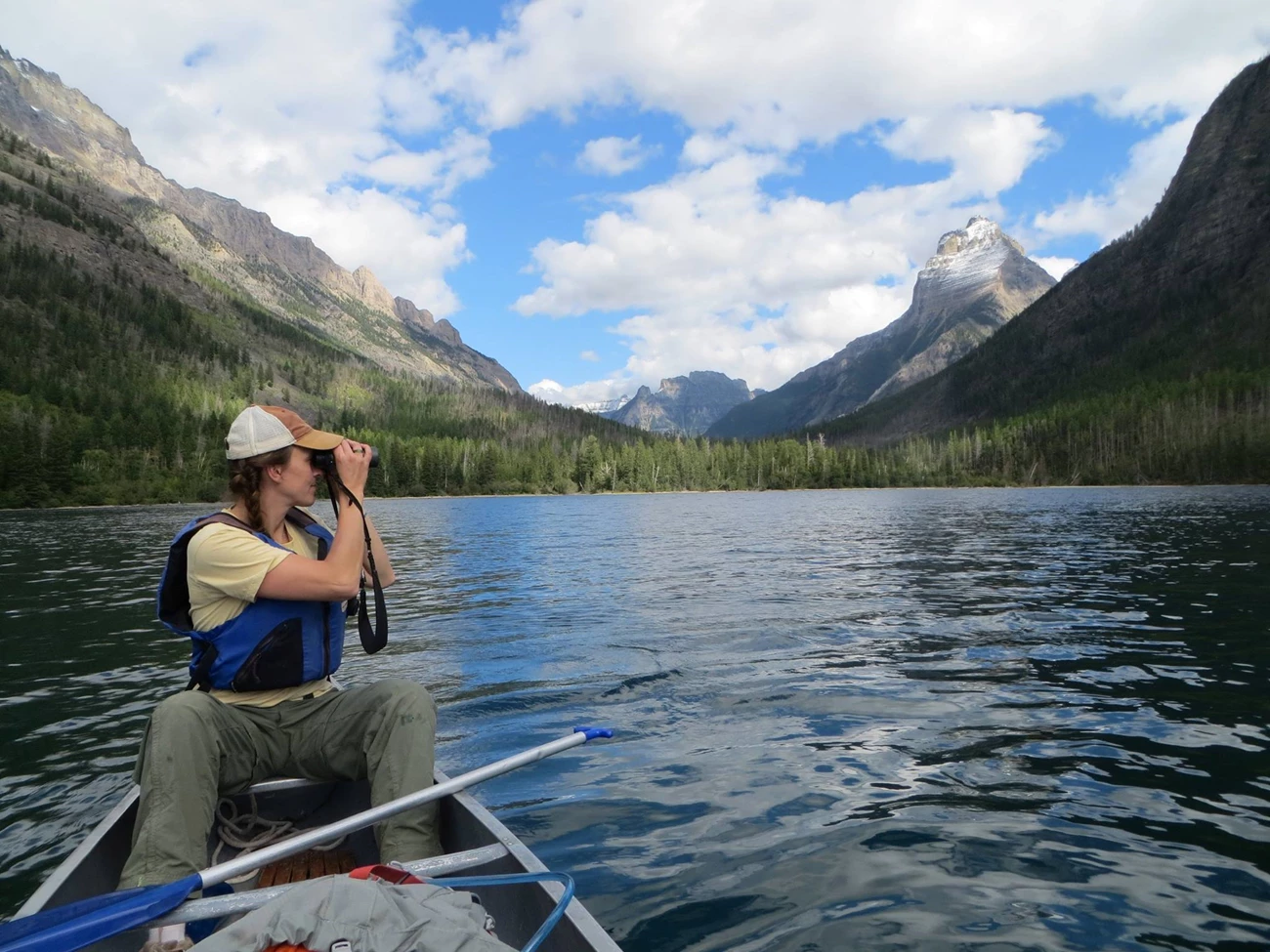Last updated: February 23, 2021
Article
The Survey123 App: Enhancing the Citizen Science Experience
By Nate Wold

NPS/Melissa Sladek
How many loons are in the park? What disturbances are there in loon habitat? Which lakes support resident loons and produce chicks year after year? These are questions citizens scientists have been helping to answer since Glacier National Park’s Common Loon Citizen Science Project began in 2005. In past years, participants set out to a frontcountry or backcountry lake to count loons, describe loon behavior, and document other wildlife present—all of which was recorded on an 8 ½ x 11 sheet of paper. But this summer, collecting data to get the answers to those questions just got a whole lot easier! Citizen scientists will now be able to use a new data collection method, the Survey123 app, to improve efficiency and add to their experience.
Survey123 is an easy-to-use mobile application that asks a series of questions to collect data and geospatial information from a smartphone or any other mobile device equipped with GPS. The Survey123 app can be designed for many types of projects, requires little training to use, works from any device, and supports offline data collection. These are all important characteristics if you are working with hundreds of volunteers in a park with little to no cell service.
With Survey123, we can move more quickly from question to answer when working with a large group of participants. Survey123 makes it possible to create a map in real time as observations come in from the field. The answers that are collected and the instant map display help park biologists and managers make informed decisions in a timely manner about possible management actions. For example, if the nesting sites of loons are consistently disturbed, managers could limit fishing on the lake in order to enhance the likelihood of nesting success. Additionally, this real-time data helps program managers see where additional surveys may be needed. This ability to be proactive and responsive increases the chance of a nest being successful and chicks fledging and migrating off in the fall.
In addition to answering important questions, another important aspect of citizen science is to ensure that participants see how their contributions are making a difference. The instant maps created from the Survey123 application help make this possible. Once surveys are submitted, citizen science volunteers are able to see their contribution instantaneously with a Loon Survey Priority web map. This priority web map works in conjunction with Survey123 to help inform citizen scientists about where surveys are needed and help them determine which survey sites match their interest and ability. It was developed through a partnership between the Continent Research Learning Center (CCRLC) staff and students from Worcester Polytechnic Institute. With their assistance, we now have a method for a more self-directed, transparent, and engaging citizen science program, enhancing the experience of our volunteers.
Not only is it important to enrich the experience of our citizen scientists, but also to provide accurate and timely data to our partners. From its creation in 2005, the Common Loon Citizen Science project has worked closely with Montana Fish, Wildlife, and Parks (FWP) to share data collected on loons in Glacier National Park to the broader state database. Each year, survey data collected on paper data sheets was entered into a database, checked multiple times for errors, and then transferred to FWP’s database. With Survey123, a completed survey can be used by both the state and Glacier’s Citizen Science Program. This will decrease the amount of data entered by our staff and increase our capacity to expand and refine our program. It will also allow more time for quality control and thus strengthen the accuracy of the data given to FWP, creating an improved state-wide common loon database.

NPS
Data is critical in driving management decisions, which help to ensure the health of the park. The overall goal is to protect the treasures we cherish and preserve them for future generations. By asking citizen scientists to contribute to our understanding of species in the park, they are a crucial part of this goal.
The CCRLC’s Citizen Science Program is constantly looking for new ways to connect with visitors and local residents, helping them discover and appreciate the many facets that make Glacier National Park truly unique. Survey123 now adds a new and exciting aspect to the citizen science experience that can help develop a greater understanding and appreciation of the park we all cherish.
